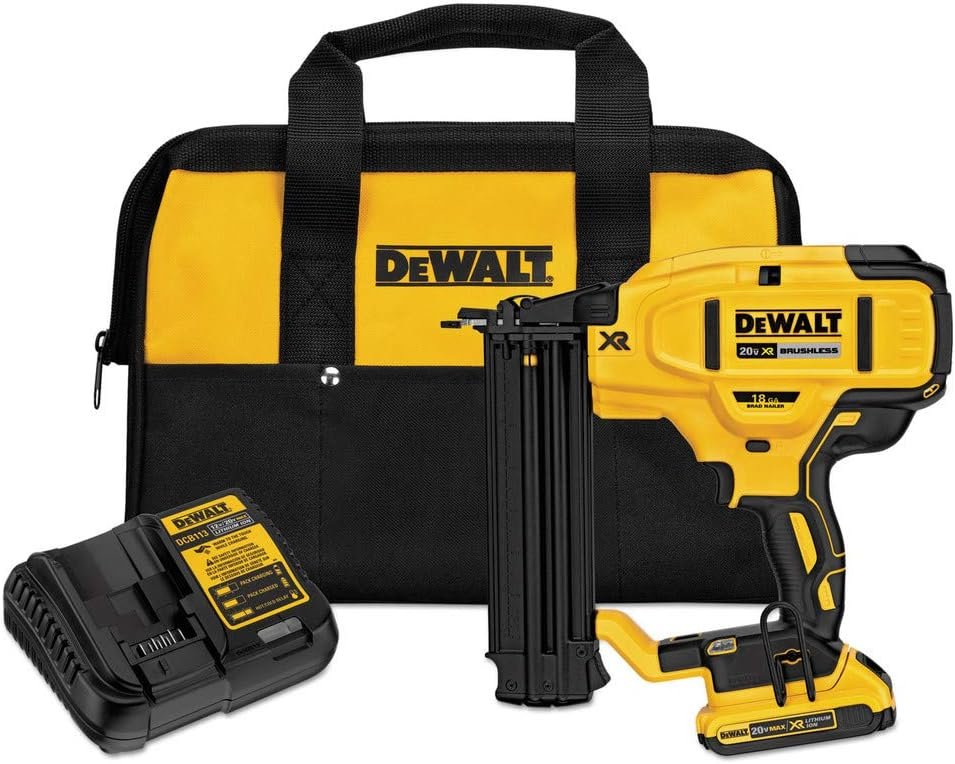It used to be that cordless nail guns and staplers didn’t have the power or battery life to be worth using for most projects, but with batteries getting more efficient, you can use a regular cordless tool battery with a brad nailer and still get pretty good results while using your tool for hours at a time. While cordless nailers aren’t necessarily geared for large-scale construction, for smaller jobs like building furniture or assembling a woodworking project, a cordless brad nailer can be a convenient alternative to a pneumatic one.

Because a cordless nailer is electric, you don’t need a compressor to run it, and you don’t have to drag an air hose around with you while you work. This allows you to operate your nailer in tighter spaces, and more quietly as well because you won’t have your compressor motor kicking on to re-pressurize the tank. I tend to like to use mine when I’m working outdoors, or when I have some fussy parts to assemble that require a more careful tools placement. I also find this tool much more convenient to use on a ladder because you aren’t tethered to a pneumatic tank as you go.
A cordless stapler can be used for fastening in areas where you’re not worried about the look of your surface. Staples are a little bit sturdier than nails, so they can be a good choice for structural joints, but because they have a larger visual profile, staples are a little bit harder to hide. I use staples when I plan to fill and paint, especially for attaching plywood to a frame.
You can use a cordless nail gun on trim, shelving, or any kind of imaginative woodworking you like, but you should note that the battery life isn’t unlimited. Eventually, you’ll need to swap your battery for a fresh one, so having a pair of batteries rather than just one is ideal. If you plan to work with tougher materials like hard wood for an extended period of time, it’s likely better to use a pneumatic nail gun because these will allow you to work for longer and with less hassle.
